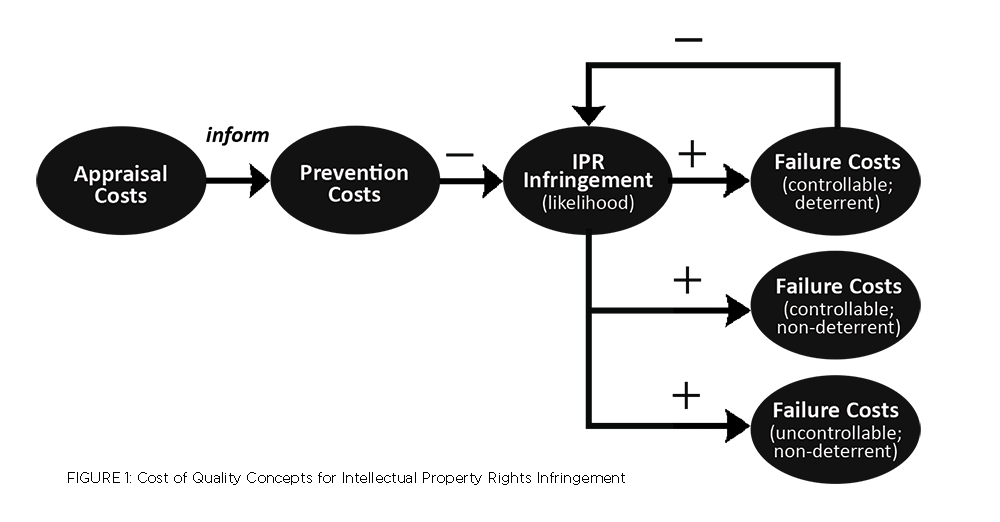Karen Sedatole
Professor of Accounting at Emory University, Goizueta Business School
Will Demeré
Assistant Professor of Accountancy at University of Missouri, Trulaske College of Business
Jeremy Wilson
Director, Center for Anti-Counterfeiting and Product Protection & Professor School of Criminal Justice, Michigan State University
Measuring the value of brand protection is a significant challenge. At many companies, resources are allocated based on the ability to demonstrate a return on investment. While brand protection professionals and those close to the action recognize the inherent value in brand protection, it can be difficult to communicate this value to senior management, especially when good metrics are not readily available.
We are researching companies’ allocation of resources to brand protection. Our goal is to provide tools and frameworks to better understand the value of brand protection. We have already conducted a series of interviews with brand protection groups as the initial phase of this research, and presented preliminary findings at the A-CAPP Center Brand Protection Strategy Summit and International AntiCounterfeiting Coalition conference in October.
To provide new insights into resource allocation and brand protection measurement, we have adapted the Cost of Quality (CoQ) model to the brand protection setting. The CoQ model was originally developed to analyze the costs of preventing and measuring quality problems, and to assess the costs of quality failures. We have taken the concepts of quality costs, added new insights, and applied this model to intellectual property rights (IPR) infringement. The updated model is shown in the figure below.

Based on the CoQ model, costs related to IPR infringement are classified as either prevention (incurred to prevent IPR infringement), appraisal (incurred to assess the extent and effects of IPR infringement), or failure (incurred due to actual IPR infringement). This model highlights that brand protection costs (prevention and appraisal costs) are investments—similar to investments in preventing quality problems—and the returns to these investments are reductions in the likelihood and impact of IPR infringement (failure costs). We also add to the CoQ model in the context of IPR infringement by considering the nature of these investments and costs. Specifically, we consider the controllability, measurability, and dynamism of brand protection investments and IPR infringement costs.
Controllable costs are those that are under the control of the company—in other words, these are costs whose level is set by the company. An important takeaway from the model is that some controllable failure costs deter future IPR infringement. For example, companies that pursue legal action signal the market about their willingness to act. Viewing such instances purely as costs fails to account for this dynamic benefit. Controllability also affects the planning of brand protection efforts with respect to budgeting and planning for reserves.
Costs differ in their measurability, as some costs are more difficult to measure than others. When assessing the value of brand protection efforts, it is important to consider these difficult-to-measure costs, as they often represent the greatest bottom line exposure for the company.
We suggest that investments in brand protection have a feedback effect. Investments made this year can benefit subsequent years by reducing the likelihood and magnitude of IPR infringement. Some investments may also contribute to the effectiveness of other investments, resulting in a multiplicative effect. This means that annual metrics may understate the true value of brand protection efforts. Additionally, while an improvement in metrics may signal improvement in some areas, it can suggest the need to continually scan the environment and invest in new areas to proactively address evolving risks.
FEEDBACK EFFECT: INVESTMENTS MADE THIS YEAR CAN BENEFIT SUBSEQUENT YEARS BY REDUCING THE LIKELIHOOD AND MAGNITUDE OF IPR INFRINGEMENTS
MULTIPLICATIVE EFFECT: INVESTMENTS IN ONE BRAND PROTECTION ACTIVITY CAN ENHANCE THE EFFECTIVENESS OF OTHER BRAND PROTECTION ACTIVITIES
One of the purposes of our research is to provide brand protection groups with tools for highlighting the value of brand protection efforts, particularly to senior management. Where resources are fought over, having tools to demonstrate the difficult-to-measure value of brand protection investments is increasingly critical.
Applying this model to IPR infringement provides a more holistic view of the costs and benefits associated with brand protection, and better captures the dynamic nature of IPR infringement. The characteristics of brand protection investments in our model also provide important insights into the nature of preventing, assessing, and managing IPR infringement.
CALL TO ACTION!
The next phase of our research will focus on validating our proposed model, both at industry and individual company levels. If your company would like to participate in a study and you are willing to share data on investments in prevention and appraisal activities, the costs of IPR infringement, and the various performance metrics your company uses to monitor brand protection efforts, please contact Will Demeré (demereb@missouri.edu) or Karen Sedatole (ksedatole@emory.edu).
A mutually agreeable non-disclosure document will ensure the anonymity of your company’s participation and guarantee your data will be secure. We believe your company can benefit from this research and your participation can also contribute more broadly to insights within the brand protection community.
RESEARCHER SPOTLIGHT

Karen L. Sedatole
is a Professor of Accounting at Emory University’s Goizueta Business School. Prior to joining Emory University in 2017, she served on the faculty of the University of Texas at Austin and most recently held the position of Russell E. Palmer Endowed Professor of Accounting at Michigan State University’s Eli Broad College of Business. Karen holds BSE (computer engineering) and MBA degrees and received her PhD from The University of Michigan in 2000. Her research focuses on the design and effectiveness of performance measurement and reward systems, the role of forecasting and budgetary systems within organizations, and control in inter-organizational collaborations. She has partnered with numerous corporations in the auto, chemical, and high-tech industries to generate research relevant to the business community and twice was awarded (along with her co-authors) the Impact on Management Accounting Practice Award. Her research, which includes archival, field research, and experimental methodologies, has been published in Journal of Accounting Research, The Accounting Review, Contemporary Accounting Research, Management Science, Journal of Management Accounting Research, Management Accounting Research, Accounting Horizons, and Accounting, Organizations and Society. Professor Sedatole is a two-time recipient of the American Accounting Association Notable Contributions to Management Accounting Research Award. She currently serves as Editor of Accounting Horizons and Senior Editor of the Journal of Management Accounting Research.

Will Demeré
is an Assistant Professor of Accountancy at the University of Missouri. He received his PhD in Accounting and Information Systems from Michigan State University and his BS and MS in Accounting and Information Systems from Virginia Tech. Will teaches advanced auditing and risk management, and has previously taught courses in cost and managerial accounting, financial accounting, and information systems. His research focuses on performance evaluation and incentives, corporate governance, and developing new approaches to measurement. Will also previously worked for Deloitte in its auditing practice, and taught in the Accounting and Information Systems Department at Virginia Tech and in study-abroad programs in France and Germany.

Jeremy Wilson
is a Professor of the School of Criminal Justice at MSU, and has founded and directs the Center for Anti-Counterfeiting and Product Protection and the Program on Police Consolidation and Shared Services. Prior to joining MSU, Dr. Wilson was a Behavioral Scientist at the RAND Corporation, where he led the development of the Center on Quality Policing and the Police Recruitment and Retention Clearinghouse. He has held a wide variety of appointments and honorary titles at prestigious institutions around the world, and has served as an instructor for numerous law enforcement and brand protection training programs. Dr. Wilson has collaborated with police agencies, communities, task forces, companies, associations and governments throughout the U.S. and the world on many complex public safety problems, and has led over $10 million of projects sponsored by the U.S. Congress, various units of the U.S. Departments of Justice and Interior, community and institutional foundations, local governments, police departments, professional associations, and corporations. Among other areas, he has written extensively for practitioners and scholars on brand protection, product counterfeiting, police staffing and personnel planning, organizational consolidation, resource allocation, community policing, field interventions for violence prevention, data and measurement, empirical modeling and evaluation. Dr. Wilson’s research and commentary have been featured in numerous books, professional publications, academic journals, and Congressional testimony, and in various forms of national and international media. The Academy of Criminal Justice Sciences, Johnson & Johnson, Underwriters Laboratories, and others have honored him with recognition awards for his contributions to criminal justice, policing and brand protection.
THE BRAND PROTECTION PROFESSIONAL |DECEMBER 2017 | VOLUME 2 NUMBER 4
2017 COPYRIGHT MICHIGAN STATE UNIVERSITY BOARD OF TRUSTEES
THE BRAND PROTECTION PROFESSIONAL |DECEMBER 2017 | VOLUME 2 NUMBER 4
2017 COPYRIGHT MICHIGAN STATE UNIVERSITY BOARD OF TRUSTEES
